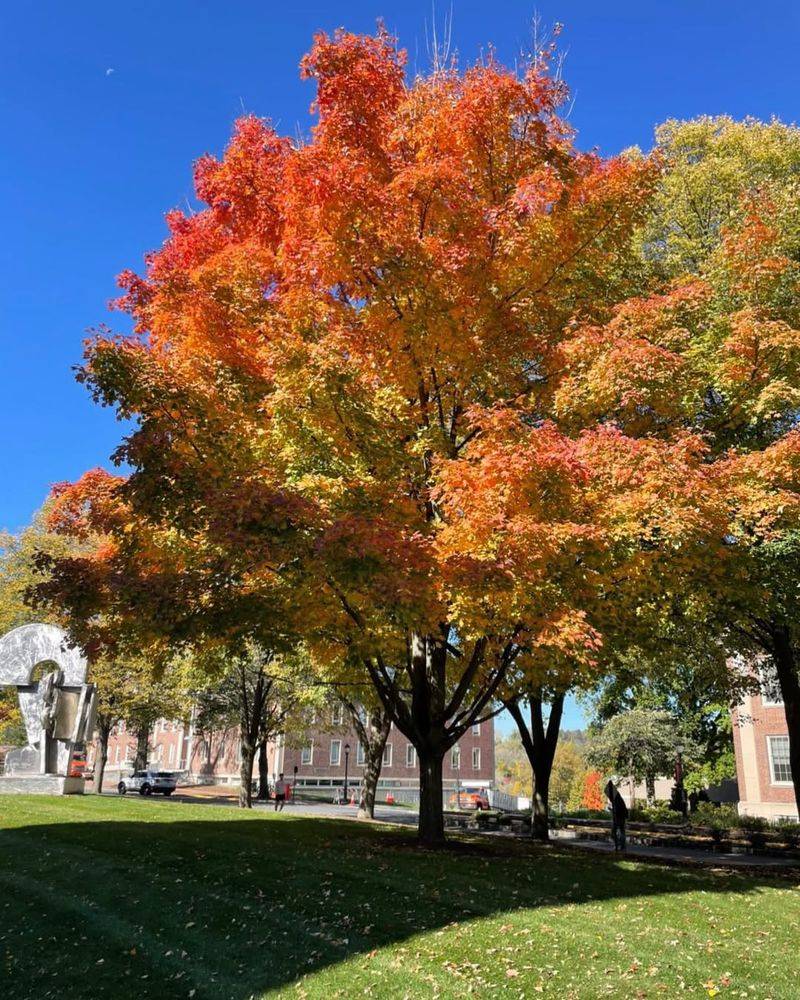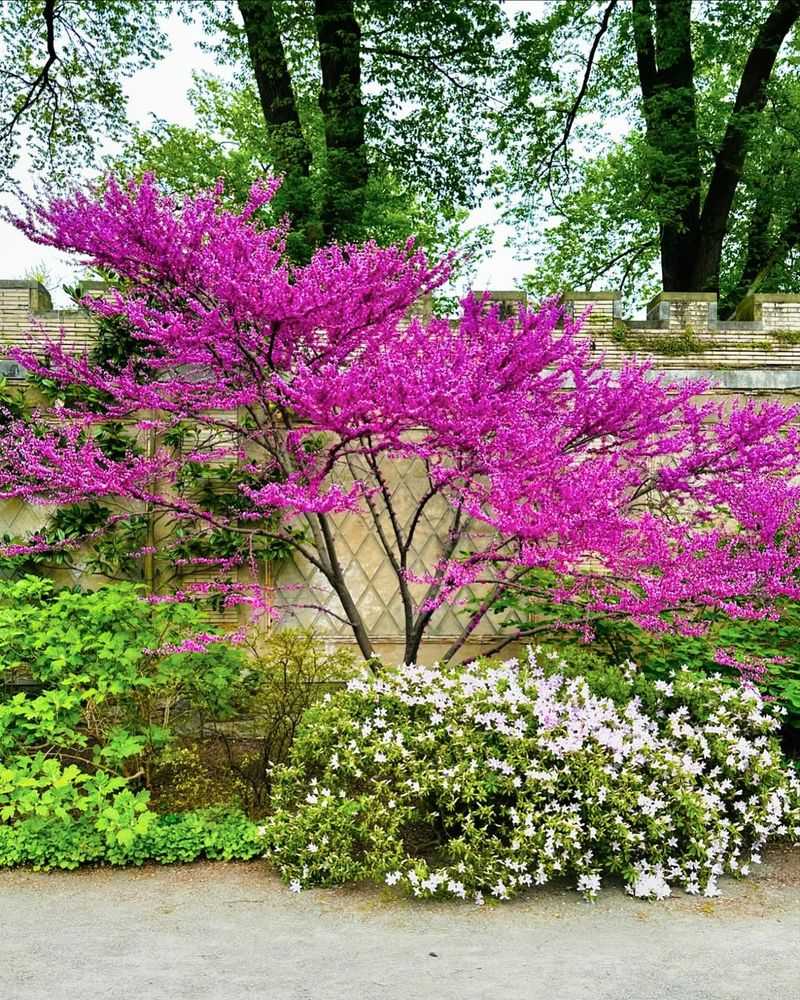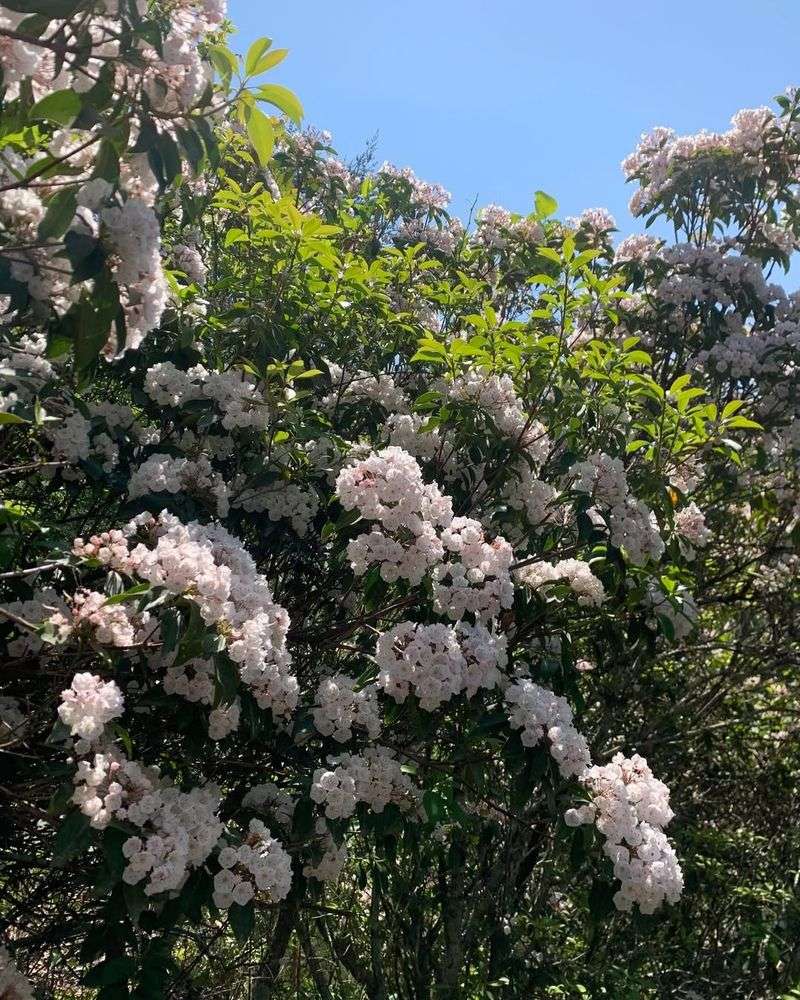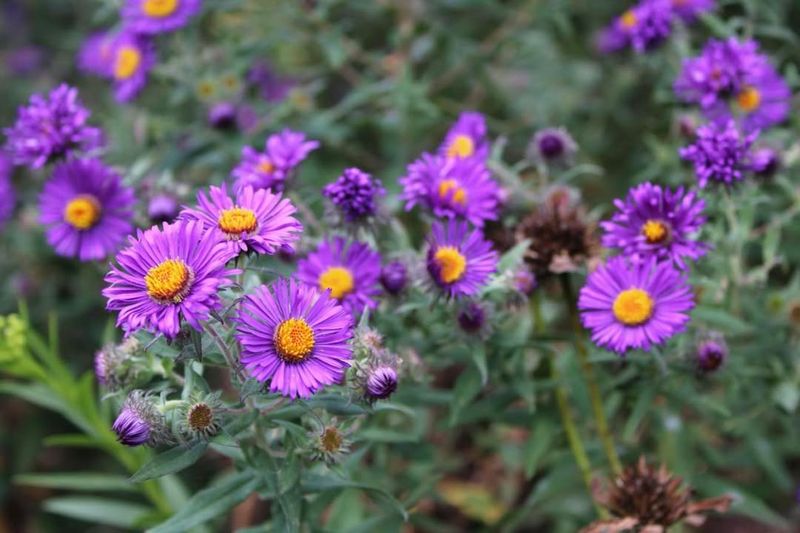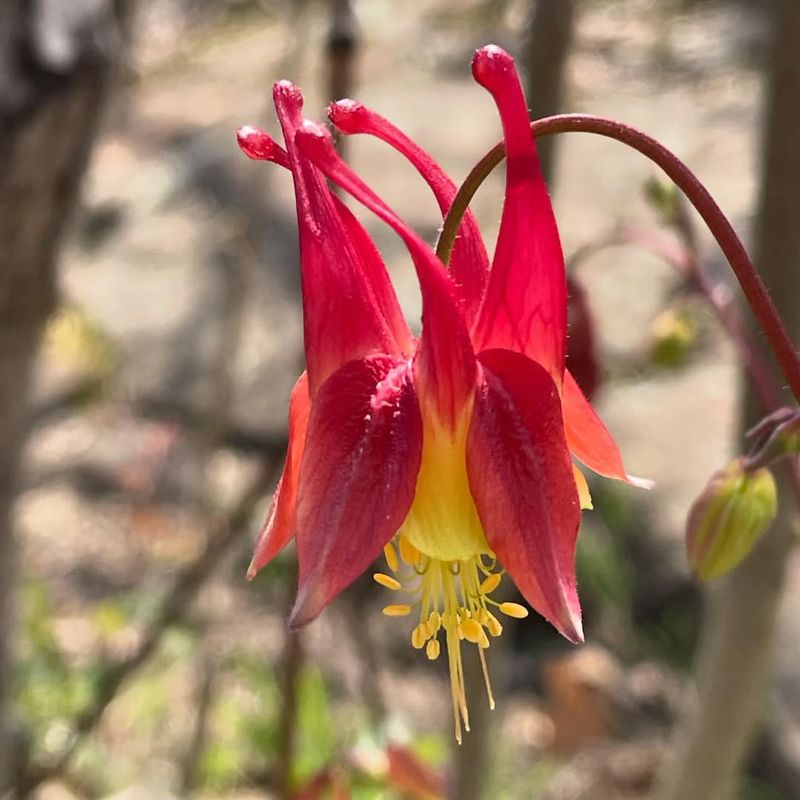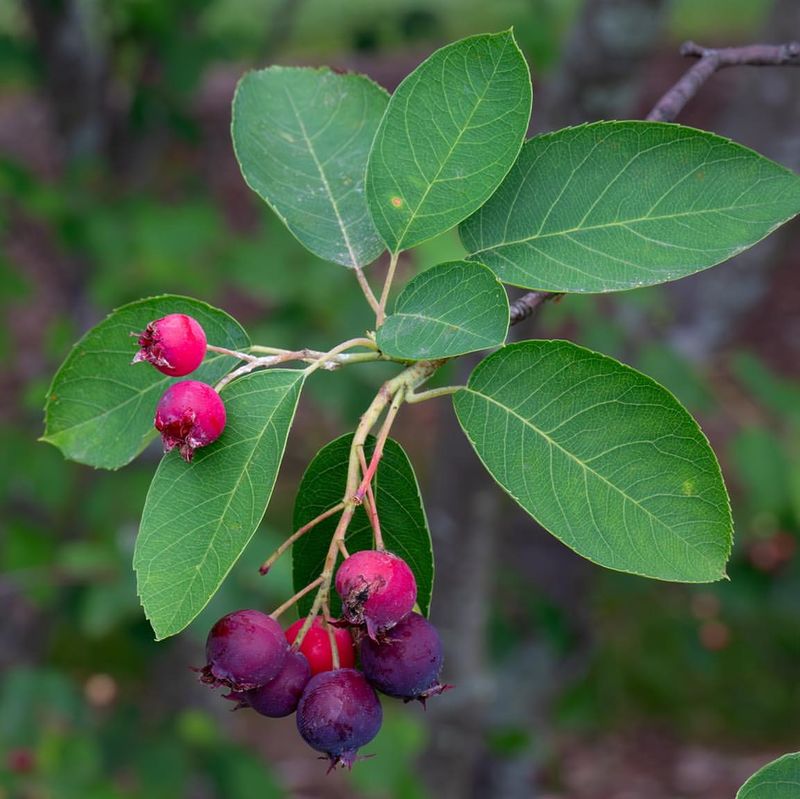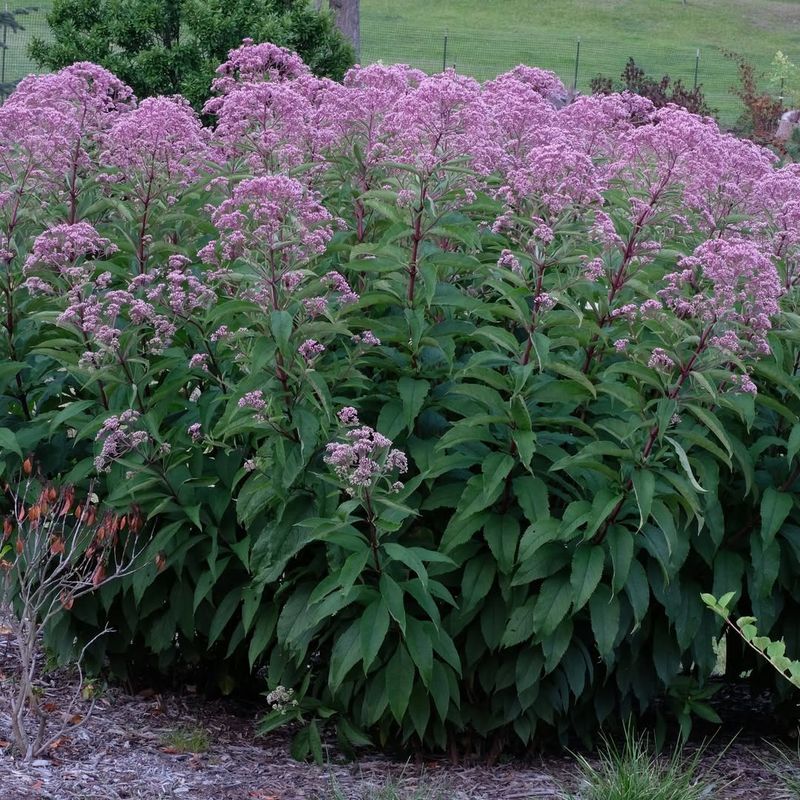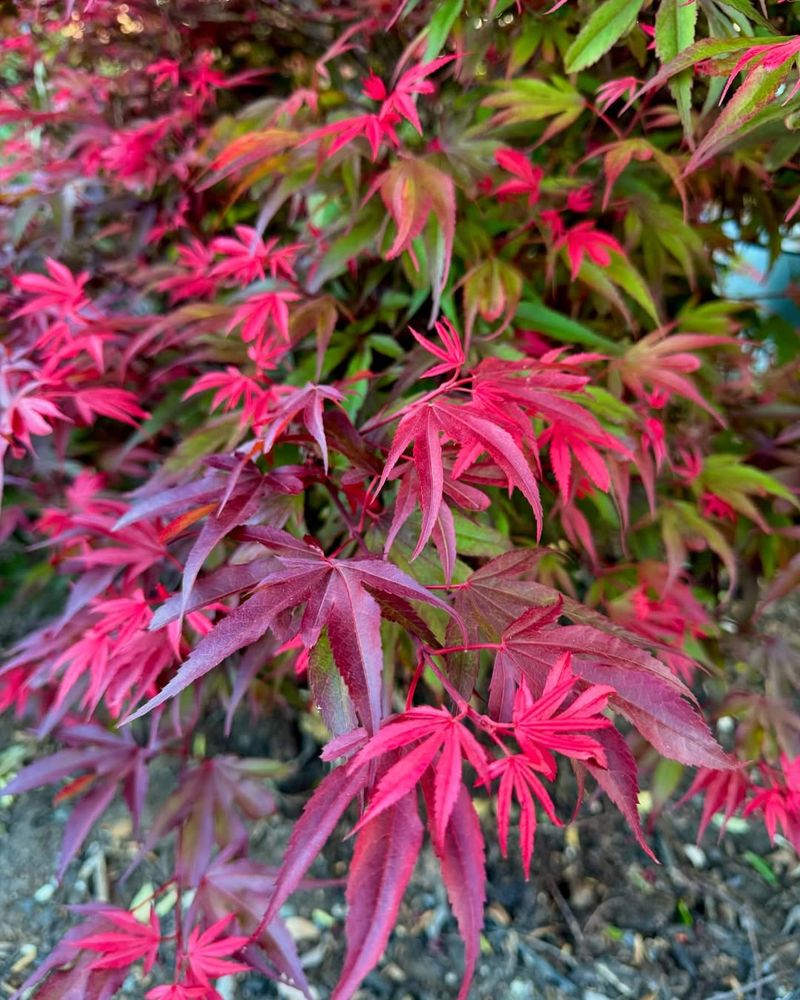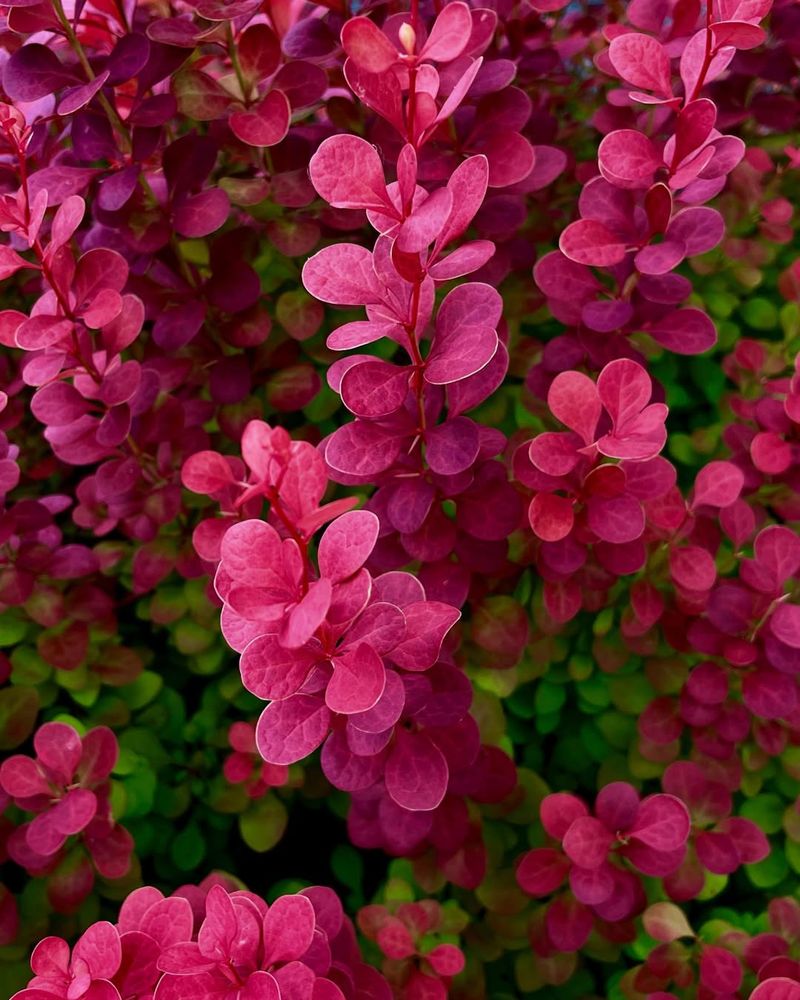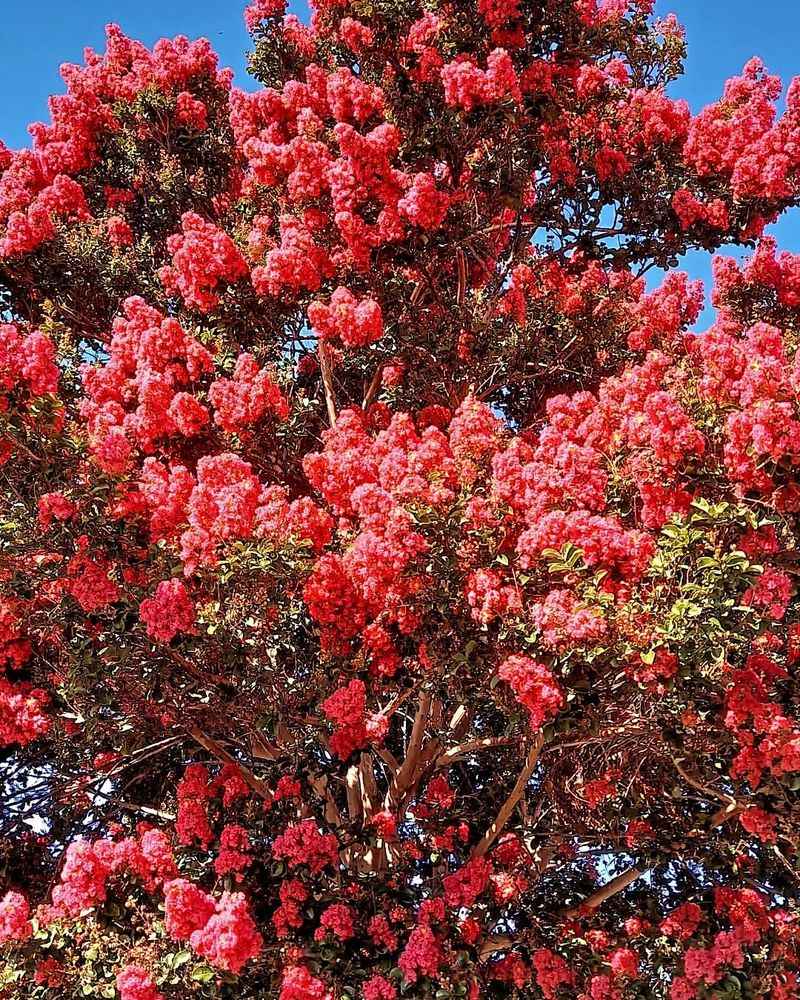Designing a breathtaking Northern landscape requires more than just a green thumb—it’s all about choosing the right plants that thrive in the region’s diverse climate. From stunning seasonal blooms to hardy evergreens that withstand harsh winters, the right plants can transform your outdoor space into a year-round spectacle.
But not all plants are created equal! While some flourish effortlessly, others can wreak havoc on your garden, demanding constant upkeep, spreading invasively. Let’s dig into the best (and worst) choices for a thriving Northern garden.
1. Sugar Maple (Acer Saccharum)
This iconic tree paints the Northeast landscape with striking hues of orange and red each fall, making it a must-have for autumn enthusiasts. The sugar maple, beloved for its spectacular foliage, is also a cornerstone of local ecosystems, providing habitat and food for various wildlife.
In addition, this tree is known for producing syrup, a sweet delight that complements pancakes perfectly. Its stunning presence and ecological contributions make it a cherished part of any garden.
2. Eastern Redbud (Cercis Canadensis)
In early spring, this tree bursts into a brilliant display of pink blossoms, creating a breathtaking spectacle. The Eastern redbud’s flowers not only captivate with their beauty but also serve as an important source of nectar for pollinators, including bees and butterflies.
As these blossoms give way to heart-shaped leaves, the tree continues to add interest to the landscape. Its early blooms and ecological importance make it a valuable addition to any garden.
3. American Dogwood (Cornus Florida)
All year long, this tree enhances landscapes with its seasonal transformations. In spring, American dogwood dazzles with clusters of white flowers, while autumn brings bright red berries that persist into winter.
Its vibrant fall foliage adds another layer of beauty, making it a versatile choice. Beyond aesthetics, the tree’s berries provide a vital food source for birds, adding ecological value.
4. Black-Eyed Susan (Rudbeckia Hirta)
These cheerful flowers bring a ray of sunshine to any garden with their bright yellow petals and dark centers. Black-eyed Susan is a favorite perennial in the Northeast, admired for its long blooming season that stretches from summer to fall.
Not only are they visually striking, but they also boast drought resistance and low maintenance needs. Their resilience and charm make them a staple in any garden palette.
5. Purple Coneflower (Echinacea Purpurea)
This plant is more than just a pretty face; it’s a powerhouse of benefits. Purple coneflower, recognized by its vibrant petals and spiky, domed centers, is a haven for local pollinators like bees and butterflies.
Beyond its ecological role, it offers medicinal properties, often used in herbal remedies to boost the immune system. Aesthetic appeal and health benefits make it a dual-purpose garden treasure.
6. Mountain Laurel (Kalmia Latifolia)
With its intricate, cup-shaped blooms, this shrub adds an air of mystery and elegance to the garden. Mountain laurel thrives in the Northeast, gracing landscapes with pink and white flowers that captivate admirers.
It prefers well-drained, acidic soil, making it a perfect fit for woodland gardens. Its enchanting flowers and ability to thrive in local conditions make it a standout choice.
7. Winterberry Holly (Ilex Verticillata)
During the cold months, this shrub becomes a beacon of color with its bright red berries. Winterberry holly is a deciduous shrub that stands out in the winter landscape, offering a contrast against the snow.
These berries not only add visual interest but also provide sustenance for birds during scarce winter months. Its vibrant and ecological roles make it an invaluable addition.
8. New England Aster (Symphyotrichum Novae-Angliae)
Late-season color is a hallmark of this vibrant plant. New England aster, with its purple, daisy-like flowers, brightens up fall gardens when many blooms have faded.
It’s a crucial nectar source for pollinators, especially during migration periods. Its beauty and ecological importance make it a fall garden staple.
9. Wild Columbine (Aquilegia Canadensis)
Delicate and graceful, these flowers sway gently with the breeze. Wild columbine’s red and yellow blooms are not only visually appealing but also attract hummingbirds and pollinators seeking nectar.
It flourishes in partial shade and rocky soil, making it adaptable to various garden settings. Its charm and ecological benefit add to its garden appeal.
10. Northern Sea Oats (Chasmanthium Latifolium)
The ornamental elegance of this plant is hard to overlook. Northern sea oats feature distinctive seed heads that sway gracefully, adding movement and texture to the garden.
They thrive in shade and can adapt to different soil types, making them versatile for landscape design. Their unique appearance and adaptability make them a favorite choice.
11. Serviceberry (Amelanchier Spp.)
This tree captivates through the seasons with its changing beauty. In spring, serviceberry boasts white blossoms, later transforming into small, edible berries enjoyed by both humans and wildlife.
In fall, its foliage turns vibrant with shades of red and orange. Its multi-seasonal appeal and edible delights make it a garden favorite.
12. Switchgrass (Panicum Virgatum)
Resilience and beauty define this native grass. Switchgrass thrives in a variety of conditions, offering erosion control and habitat for wildlife.
The tall, graceful blades sway with the wind, adding movement to the landscape. Its environmental benefits and aesthetic appeal make it a valuable addition to any garden.
13. Joe-Pye Weed (Eutrochium Purpureum)
Butterfly lovers rejoice with this plant’s arrival in your garden. Joe-Pye weed features tall clusters of purple flowers that are a magnet for butterflies and bees.
Its impressive height and vibrant blooms create a striking vertical element in the landscape. Its beauty and pollinator-friendly nature make it a garden essential.
14. Eastern Hemlock (Tsuga Canadensis)
Lush and evergreen, this tree offers year-round beauty and ecological benefits. Eastern hemlock provides shade and shelter for wildlife, creating a habitat for birds and small mammals.
The graceful branches of eastern hemlock and fine needles add texture to the garden landscape. Its year-round presence makes it an invaluable part of any garden design.
15. Highbush Blueberry (Vaccinium Corymbosum)
This plant offers a delightful blend of beauty and edibility. Highbush blueberry shrubs produce delicious, nutritious berries that can be enjoyed fresh or in culinary treats.
In fall, their foliage turns a brilliant red, adding color to the garden. Their dual-purpose nature makes them a prized addition to landscapes.
16. Norway Maple (Acer Platanoides)
Despite its widespread presence, this tree poses ecological challenges. Norway maple’s dense foliage creates heavy shade, outcompeting native plants for sunlight.
Its invasive tendencies reduce biodiversity, troubling local ecosystems. Awareness of its impact is crucial for maintaining healthy landscapes.
17. Burning Bush (Euonymus Alatus)
While its autumn display is dazzling, this plant comes with concerns. Burning bush is known for its invasive nature, spreading rapidly and outcompeting native species.
Gardeners are encouraged to consider native alternatives that offer similar visual appeal. Balancing beauty with ecological responsibility is key.
18. Japanese Barberry (Berberis Thunbergii)
Beneath its attractive appearance lies potential harm. Japanese barberry’s dense growth and thorny branches provide cover for ticks, increasing the risk of tick-borne diseases.
Its ability to outcompete natives makes it a problematic choice for gardens. Seeking alternatives can help preserve local biodiversity.
19. Bradford Pear (Pyrus Calleryana)
Once praised for its blossoms, this tree now reveals its flaws. Bradford pear’s weak structure leads to branch breakage, causing maintenance issues.
The aggressive spread of this pear further disrupts local plant communities. Understanding these issues encourages thoughtful planting choices.
20. Giant Hogweed (Heracleum Mantegazzianum)
With towering height and large blooms, this plant’s beauty masks its dangers. Giant hogweed’s sap contains toxins that cause severe skin irritation upon contact.
Its invasive nature further threatens native ecosystems. Awareness and caution are vital when encountering this hazardous plant.


